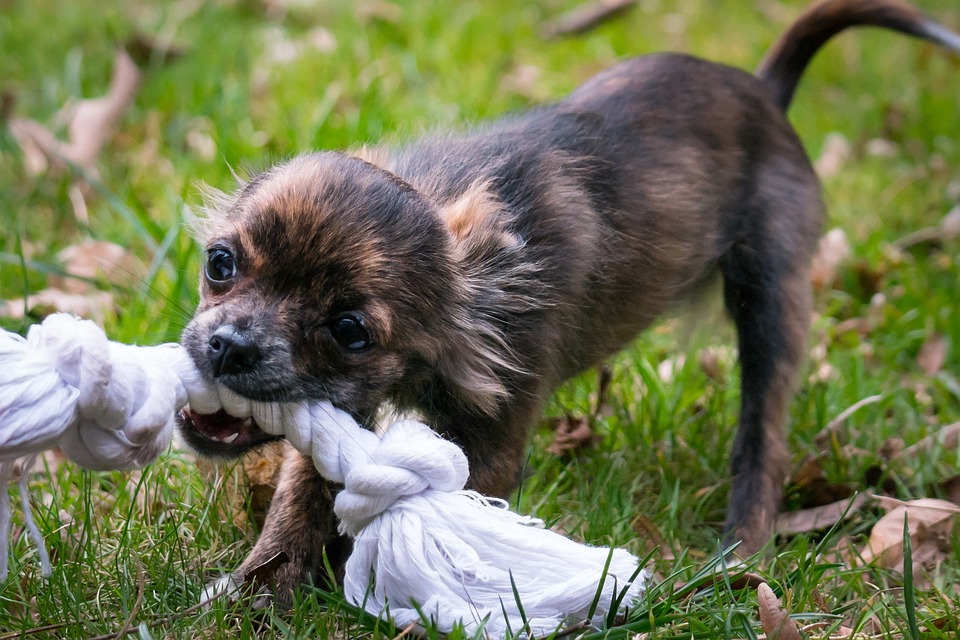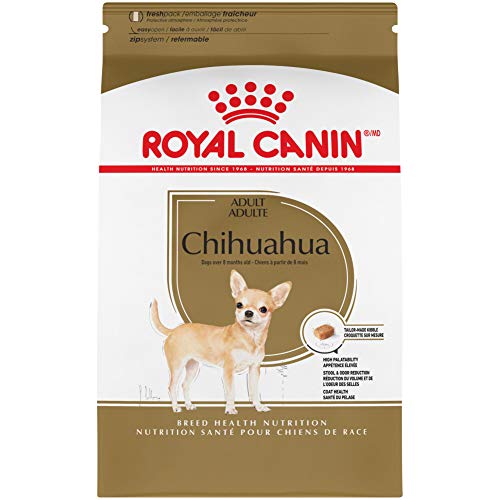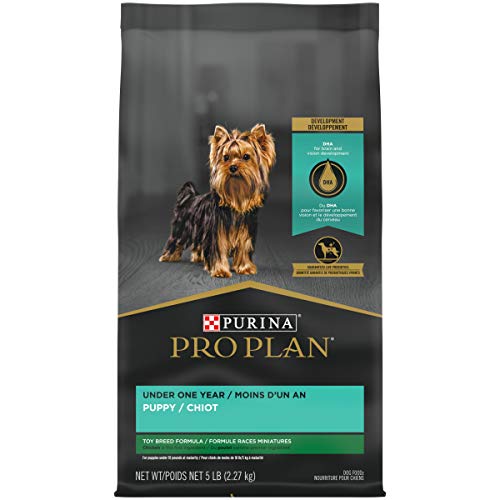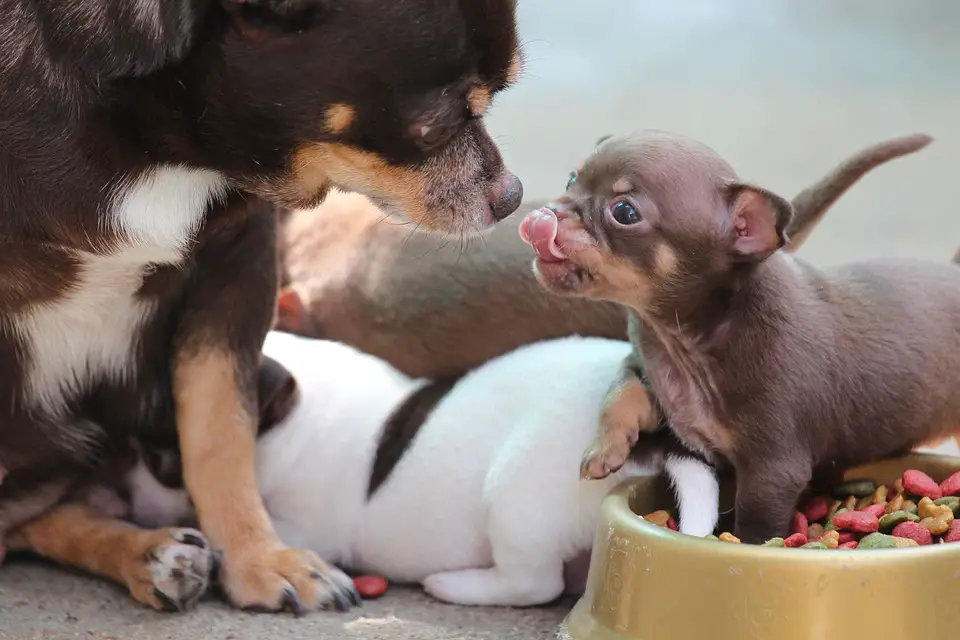How Much Food Do You Feed a 7lb Chihuahua
How much to feed a Chihuahua? How much should my pet eat on a daily basis?
The fact is: there is no 'one-size fits all' approach here.
There are several factors that you need to take into account and the quantity of food that a puppy or adult Chi eats depends on individual's unique needs.
As a pet parent, it can certainly get very difficult and confusing for you. After all, you do not want to underfeed or overfeed your beloved pet.
Underfeeding could cause vitamin deficiencies while overfeeding can lead to obesity in your Chi.
So, the best way to ensure that your dog is eating an optimum amount of food is to feed high-quality food at regimented schedules.
In this guide, we will discuss exactly how much to feed you Chi puppy and adult.
How to Decide How Much to Feed a Chihuahua?
To find the right quality of food for your puppy or adult Chi, you must consider the following factors:
1. Young, Adult or Senior Chihuahua
This is an important factor to consider when you want to decide how much to feed your Chi.
The general rule here is that puppies need more number of meals than adult Chis.
Chi puppies have very small bellies and, as a result, they do not eat too much in one sitting.
That is the reason why they demand more number of feeds through the day.
Most Chi pups eat 4-5 small meals. Again, this quantity will depend on various factors which we will discuss shortly.
We also have a daily and weekly schedule that you can follow for feeding your young Chihuahua.
2. Body Weight
Your chihuahua's body weight is another important factor to consider while selecting the type of food, the number of feeds, as well as the total amount/calories of food.
Younger Chis expend a lot of energy and they are also busy all day exploring their world.
Resultantly, they tend to burn a lot of calories and hence demand more calories as well.
Young adult, adult, and senior Chihuahuas have different needs for calories and these mainly depend on how active they are as well as their body weight.
In general, fully grown Chihuahuas weigh less than or slightly over 6 lbs.
You must not forget that there are different breeds of Chihuahuas.
Naturally, you will want to vary the food and the number of meals per day based on your pet's current weight and the maximum adult weight that your fully-grown dog is supposed to maintain.
3. Metabolic Rate
This is the rate at which your Chi burns calories.
In general, smaller dogs like Chihuahuas have a faster rate of metabolism.
This means that they do not store energy but burn up energy rapidly.
That is why, both Chihuahua adults and puppies need more number of small-though-frequent meals throughout the day.
A rapidly growing puppy also has a very high metabolic rate.
It can burn through all the food it eats in a short amount of time. So do not be too surprised if your pet appears hungry in just a couple of hours!
The key is to space out the meals every 3-4 hours so you end up feeding about 4 meals by its bedtime.
It can be very easy to overfeed when you constantly scoop out food or even free feed your pet.
So, please be careful and monitor your Chi puppy's food intake.
You can further do so by counting your pet's exact calorie needs. We will talk about this shortly.
4. Activity levels
Your Chi puppy is getting plenty of exercise as it explores the world around. While your pet is rapidly developing, it is very important to still monitor their food intake levels.
Most vets recommend that Chi puppies be kept indoors at least until their basic vaccinations are covered. Till then, you must provide your pet with a secure indoor area to romp about.
Over-exercise or forced exercise is not good for your developing pup's joints. Instead, you can play a game of fetch or stimulate your young pet mentally and physically through some obstacle courses, training sessions, light walking, puzzles, etc.

Check out our guide on The Best Toys for Chihuahua where we have discussed several toys for young and adult Chis.
Here is a brief guideline as to how much to exercise your chihuahua:
- 2-4 months:
Indoor exercise or short romps around the yard - 4-8 months:
2 short walks of 15 to 20 minutes each. - 8-12 months:
Slightly longer walks of 30 minutes each - 1 to 6 years:
1 walk of about 25-30 minutes or 2 walks spaced out well. - Above 9 years:
Discuss with your vet how much to exercise your senior pet based on its overall health.
5. Type of Food – Wet or Dry
Since wet/canned dog food is generally higher in nutrients as well as water, your pet might feel more satiated with it.
This will again also depend on your pet's weight, activity levels, and age.
But, in general, if you choose to feed wet food, your chihuahua might need fewer number of meals or, alternatively, small portions compared to dry food.
We will be going into details later in this guide.
Understanding Your Chi's Calorie Needs
When we talk about Chihuahua's calorie needs, we need to consider the basal metabolic rate that we briefly spoke about earlier.
Chihuahua puppies, like all small breed pups, have a very high metabolic rate.
This means that they can burn through meals in a matter of hours.
In such a case, if your pet doesn't get sufficient calories on a frequent basis, it can develop hypoglycemia which could result in tremors, seizures, lethargy, etc.
And that is why, you must feed your developing chihuahua puppy nutrient and calorie dense foods every few hours.
This calorie requirement also continues into adulthood.
This means that you need to still feed your adult Chi greater number of calories than you'd feed a medium or large breed dog of the same age.
However, after your puppy reaches adulthood, you simply cut down the total number of meals.
Thankfully, doctors and canine nutrition experts have made things easy for us here.
Calorie Recommendation: 40 calories per pound of their bodyweight.
They state that small dog breeds need 40 calories per pound of their bodyweight .
In order to calculate your puppy Chi's nutritional/calorie needs, you must also consider their adult weight too.
If, for example, your Chi puppy will grow up to be an adult weighing about 5 lb., then you need to ensure feeding it 213 calories through dry food or 202 calories through wet/canned food (per day). ( Experts have done this math, so you can trust it blindly.)
Below, we have tabulated the calories to feed your pet based on the estimated adult weight of a normal Chihuahua puppy.
| Estimated Adult Weight in lb. | Total Calories through Dry Food per day | Total Calories through Wet food per day |
| 6 | 244 | 232 |
| 7 | 274 | 260 |
| 8 | 303 | 288 |
| 9 | 331 | 314 |
| 10 | 358 | 340 |
Again, you must remember that a fully-developed purebred standard Chi should not weigh more than 3-6 lb.
Do not let this confuse you. You might feel you have to change your puppy's calorie and food amounts on a daily basis. That is not necessary.
For normal growth your puppy needs the same amount of calories every day from 4 months to about 12 months of age.
To summarize the calorie needs for different life-stages:
- Puppy less than a year old and exercising daily:
40-50 calories per pound of body weight per day. - Chihuahua aged between 1-7 years and exercising daily:
35-40 calories per pound of body weight per day. - Senior Chi, aged 8+, exercising moderately or not at all:
30 calories per lb of body weight per day.
How Much to Feed an Adult Chihuahua?
A Chihuahua puppy's growth slows down by the time it is 12 weeks of age and by 6 months, they stop growing.
However, your Chi is only considered an adult at 1 year old.
Your adult Chi's meals can consist of ¼ to ¾ cup of dry dog food or you can feed a proportionate amount of wet or canned food. This quantity has been recommended by experts based on the above calorie calculations.
(If you feed canned food, feed slightly less than the recommended amounts or follow the label instructions. You can also refer to the calorie-chart given above).
A word of caution
Never rely on recommendations like '1 cup' across the board as – much like clothing sizes where size 10 can mean different things across brands – dog food sizes also vary.
In short, 1 cup of dog food of one brand is completely different than 1 cup of dog food of another brand.
How often to feed an adult Chihuahua?
You can feed your adult Chihuahua about 2 meals per day, one in the morning and another in the evening.
Again, it is very important to focus on the quality of food here.
The main ingredient in your chosen food should be meat. There should be very little, if any, grains, in the food. (We have discussed this in detail below).
Adult activity level and meal plan
An adult Chi can get up to 30 minutes or 1 hour of exercise daily depending on its health.
Obese pets need more exercise and less food.
Older pets need moderate exercise – depending on their joints – and moderate amount of food too.
Most adult Chis eat 2 meals a day. They need to get at least 30 minutes of exercise once or twice a day.
What kind of food to feed an adult Chihuahua?
Your unique adult Chi needs high-quality protein-rich kibble or canned food.
Ensure there are no by-products in the food and also that it has balanced protein, vitamins, minerals, and omega content.
There should be no preservatives, colors, or flavorings in the food as Chihuahuas often tend to have intolerances and sensitivities to these ingredients.
If you feed kibble, opt for small-sized pieces which are easy to pick for your pet's small jaws.
We recommend the Royal Canin Chihuahua which is packed with protein, fiber, and omegas and also has a small kibble size that is perfect for your pet's small jaws.

Also, check out our guide on the Best Dog Food for Chihuahua . Here we have discussed several top foods that meet these requirements.
How Much to Feed a Chihuahua Puppy? (Weekly and monthly timeline)
| Age | How much to feed |
| 4 to 6 weeks old | A few teaspoons of kibble mixed with equal quantity of water/broth once a day along with dam's milk |
| 6 -8 weeks | A couple of tablespoons of kibble with equal parts water/broth 4-5 times a day along with dam's milk |
| 8-12 weeks | 1/8th cup of kibble 4 times a day |
How often to feed a Chihuahua puppy?
A general rule to feed your small puppy under 3 months of age is approximately 4-6 meals depending on how much exercise or activity it is indulging in.
From 3-6 months, you can slowly decrease the number of times you feed. So, if you were feeding 5 or 6 times, you can bring it down to 4 meals per day.
By the time your pet is 6 months of age up until it reaches adulthood at 1 year old, feed no more than 3 meals per day.
Puppy activity level and meal plan
The amount of activity and the number of meals your Chi pup gets daily depends on its stage of development.
- 2-3 months old chihuahua:
10-15 minutes of exercise, about 4 meals per day - Between 3 and 6 months:
15-30 minutes of exercise per day, with up to 3 meals per day - Above 6 months up to 1 year:
up to 30-45 minutes of exercise which you can divide in multiple short sessions, along with 2 meals per day.
What kind of food to feed a Chihuahua puppy?
You can continue feeding the same food that your breeder was feeding assuming you brought your pet home at 4-6 weeks.
Alternatively, you can switch to a high-quality, grain-free kibble or canned dog food for chihuahua puppies.
Select a brand of food that is made in the USA without any harmful additives, flavors, colors, or preservatives.
The food should contain calcium and phosphorus to nourish your pet's bones and teeth. It should even contain DHA for brain development.
Ideally, look for food with protein as the first ingredient and that should be easy-to-digest. Chicken, salmon, turkey, rabbit, duck, etc. are good choices for young Chis.
We recommend Purina Pro Plan Puppy Food which is a high-protein dry food specially formulated for small and toy breeds. It is packed with calcium, phosphorus, and DHA as well.

When and How to Transition from Puppy Food to Adult Food?

Toy and small breeds like Chihuahuas mature between 7-9 months of age and are considered adults at 1 year old.
Here are the steps to transition puppy to adult food:
1. Speak to your vet about the right time to transition.
S/he can recommend the right time to switch to adult food by taking into account your pet's overall health profile.
You might have to switch earlier to adult food if you spay or neuter your puppy.
2. Discuss an appropriate food with your vet.
You can check out our guide on the Best Food for Chihuahua as well – we have recommended several dry and wet foods.
3. Make the transition slowly.
On the first day, mix ¼ of new food with old food.
4. Watch out for signs of allergies, intolerances, etc.
If your pet starts scratching, or has stool changes or vomiting, stop the new food right away.
5. Observer day 4 and onwards.
If all goes well, by the 4th or 5th day, you can mix half of the new and half of the puppy food. By the end of the week, switch completely to the new/adult food.
6. Watch out for signs of intolerance.
In case your pet shows signs of intolerance like diarrhea, stool odor, stomach rumbling, etc., then be willing to try out other foods.
7. Take note of your pet's behavior.
Some 'dramatic' pets might show an unwillingness to eat new food for getting attention from you.
If this is the case, you must leave the room for a short time. If your pet hasn't eaten even after 10-15 minutes, take the food away.
8. Reduce the number of feedings.
The new food will have a different calorie content compared to puppy food. That is why you must also adjust the number of feedings.
So, if you have been feeding 3-4 meals per day, you must make it a point to reduce it to about 2 meals. Again, you must decide with your vet the exact number of calories and servings your pet should eat.
9. Consider wet dog food.
If your pet shows reluctance to eat kibble, you can switch to canned or wet food. Some pet parents also mix dry and wet foods with good results.
10 Feeding Tips for Your Chihuahua's Optimal Health
1. Always evaluate the ingredients in the dog food.
Consult your vet before making any changes to your pet's current diet.
2. Be observant of your chihuahua's weight
Weigh your pet frequently and make changes to its food/diet by speaking to your vet. Be consistent. If possible, always monitor your pet while it is eating.
3. Ensure that your dog does not eat too fast.
You can check out our guide on the Best Slow Feeder Dog Bowls to prevent this feeding habit.
4. Customize your pet's food and meal plans from time to time.
This can include texture, wet or dry, feeding schedules, etc. to suit specific needs.
5. Consult your vet from time to time to ensure that your pet is at an optimal weight.
This will help you monitor your pet's food intake as well as exercise and activity levels.
6. Watch out for food allergies and intolerance.
Your pet could develop certain conditions like allergies, food sensitivities, intolerances, etc. If you notice any itching, hair loss, appetite changes, dullness of coat, etc. consult your vet and switch to another food brand.
7. Consider your pet's different needs at different life stages.
You must also switch the food at various life stages and in the event if your pet develops a health issue. If this occurs, consult your vet to come up with the best food and meal plan.
8. Be careful when feeding human food.
Avoid feeding any human foods to your pet especially chocolates, raisins, cooked bones, grapes, etc. These can be very harmful to your pet.
9. Slowly transit your dog to new food.
When transitioning to a new food, always do it slowly. Mix a small quantity of the new food with the old food. Each day, add more and more of the new food while reducing the old food.
10. Avoid unhealthy ingredients.
Avoid food packed with salts, sugar, and fats as these can lead to many health issues like obesity, dental problems, etc.
Conclusion – How Much to Feed a Chihuahua
How much to feed a Chihuahua depends on your pet's age, weight, activity levels, and also the type of food you feed.
Always follow a consistent feeding schedule and use the information above to come up with the proper feeding quantity. This is very important to prevent your pet from being underweight or overweight.
The right feeding schedule along with high-quality kibble or canned food can ensure providing your Chi with the optimal nutrition it needs.
Some parting advice: Always keep in mind your pet's target weight, actual optimal weight, and overall health before you scoop!
bruntnellsomuckledge.blogspot.com
Source: https://thehalopets.com/how-much-to-feed-a-chihuahua/